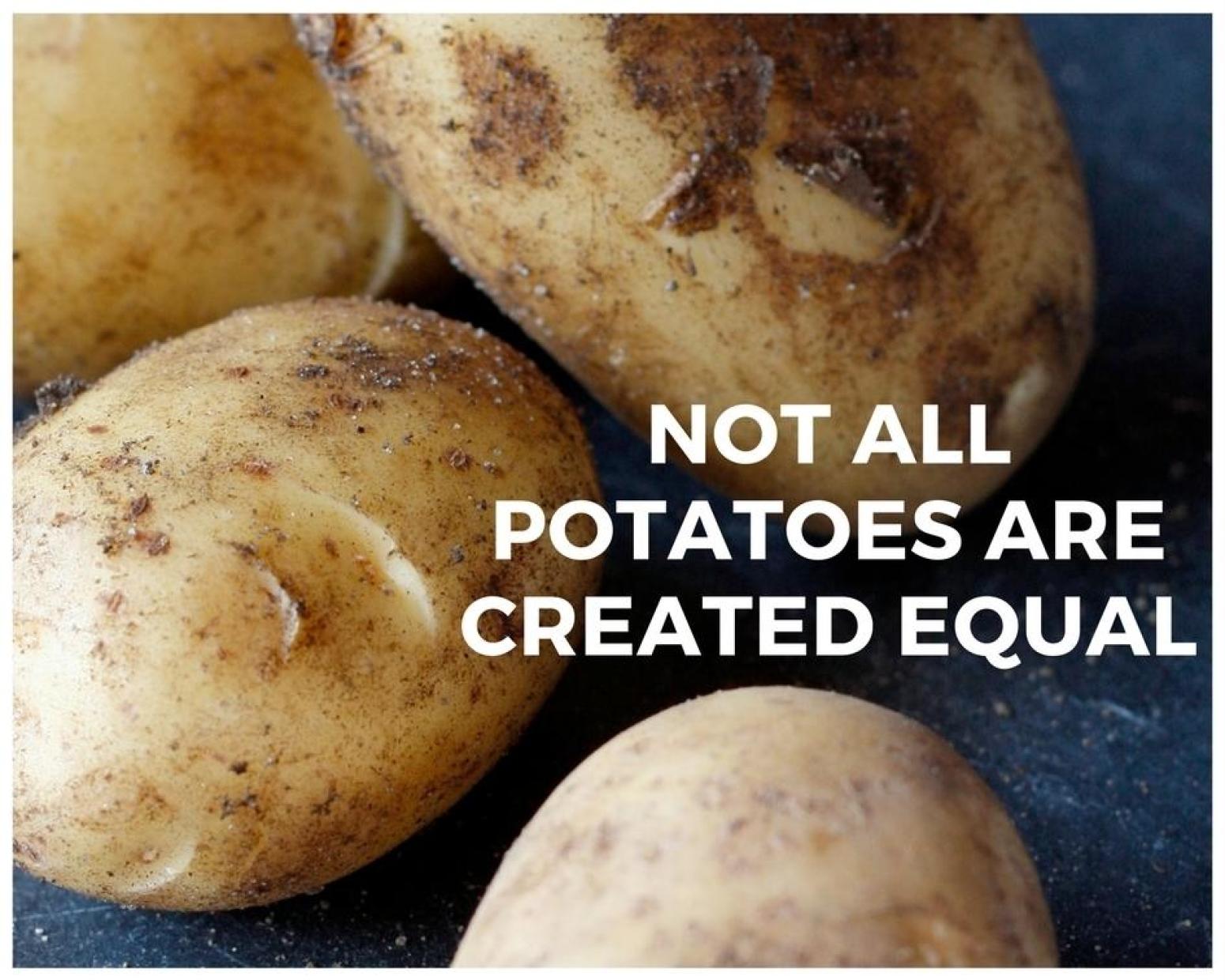Have you ever found yourself staring a pile of potatoes and wondering what type of to use for roasting, mashing, baking, soups, etc.? Not surprising considering there are over 4,000 varieties of native potatoes (mostly found in the Andes) and over 180 wild potatoes (although most are inedible).
To make your purchasing decision, there are only three categories of potatoes you need to be familiar with. Here is how to choose the right spud for the job!
Starchy
High amounts of starch and little moisture content create a “floury” light and creamy texture. They lose their shape quickly after cooking, so these are your winners for mashing and frying.
- Russet potatoes are ideal for french fries, baked potatoes or mashed potatoes.
Waxy
Low starch plus a firm texture means they hold their shape well and work great as ingredients in larger dishes. These spuds are your best choice for potato salads and other larger dishes but not soup.
- New potatoes or Baby potatoes are harvested when they are very young. Earlier harvesting means less time for sugars to convert to starch, so they are sweeter and waxier than other varieties.
- Fingerling potatoes are produced in a variety of colors and resemble the long slender shape of fingers. Must be used within three days of purchase to avoid rotting.
All-Purpose
These are multi-tasking superstars. They have medium starch content and turn out a great product using almost any cooking method.
- Red Bliss potatoes are firm, yet creamy with a slightly sweeter taste.
- Yukon Gold are known for their light, flaky texture, and rich taste.
- Blue/Purple potatoes can bring a fun punch of color to any meal. Sometimes they have skins, flesh, or both that range from light yellow to dark purple. The color comes from the antioxidant anthocyanin which helps fight free radicals and boosts the immune system. These can be used in place of any other all-purpose potato to create a fun conversation starter.
- Sweet potatoes range in colors, but most commonly they are white or orange. They are often confused with yams, which come from Southeast Asian and Africa, and which share the same sweet taste and color.
